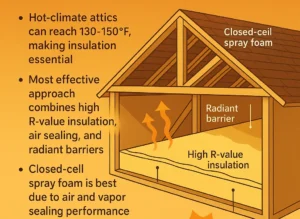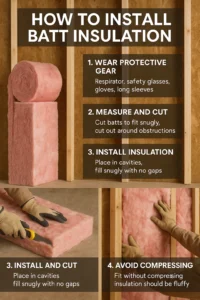But what exactly is this plenum box, and why does it hold such paramount significance in the realm of HVAC? In this article, a specialist from PureEcoInc will delve into essential elements of your home’s heating and cooling, elucidate the functioning of a plenum box, and explain the importance of correct installation.
What Is a Plenum Box in HVAC?
The sheet metal cover on a plenum box within HVAC or furnace systems protects the internal components of the system from dust, debris, and potential physical damage. This protective layer maximizes the integrity and longevity of the HVAC system and prevents any external contamination. These covers also act as barriers and prevent accidental contact with the internal components. This is done for the safety of technicians and all home occupants.
Some covers are designed with insulation properties to help maintain consistent temperatures within the plenum box and improve the overall energy efficiency of the HVAC system.
Also, these covers are often made to blend seamlessly with the background and do not stand out as an eyesore in your space.
If you face difficulties in maintaining an efficient and comfortable environment within your home or premises, we invite you to contact us for a free consultation – (877) 870-7998.
Get Free Estimate!
Request Your Home Comfort Estimate
How Does a Plenum Work?
The plenum box’s task is to regulate airflow and allow it to circulate in a smooth and efficient way throughout the building.
A plenum serves as the central chamber within an HVAC system. When the HVAC unit activates, it pumps conditioned air into this space. The plenum then becomes the launchpad, distributing this air through a network of ducts and guiding it toward the house.
The plenum doesn’t just blindly distribute air, though. It carefully balances the flow and ensures each area receives an appropriate share of conditioned air. That’s how an HVAC and furnace system guarantees a consistent and comfortable environment throughout your space.
The plenum also gathers used air back which it reconditions and forwards it back into the house. Thanks to your HVAC system, the cool or warm air in your house circulates and flows constantly and consistently for optimal heating and cooling comfort.
In essence, the plenum works to maintain the ebb and flow of heated or cooled conditioned air. When the plenum works productively, you gain in both energy efficiency and overall comfort, and you have advanced residential indoor air quality.
Get Free Estimate!
Request Your Home Comfort Estimate
What Are the Types of HVAC Plenums?
There are various types of HVAC plenums that make your home feel comfortable.
Supply plenums
These types of plenums receive conditioned air from the HVAC unit and distribute it efficiently throughout your home or office. A supply plenum sends the perfect dose of temperature-controlled air where it’s needed the most.
Return plenums
Return plenums work differently. Once the conditioned air has served its purpose in keeping your space comfortable, it’s the return plenums’ turn. The return plenum box collects the used air from different rooms and gather it back into the HVAC system for reconditioning and recirculation to ensure a continuous cycle of fresh and conditioned air in your home.
Transition plenums
Transition plenums serve as connectors and help to smoothly transition between the shape and size of ductwork. They help to seamlessly connect various components of the air conditioner system.
Auxiliary plenums
Some HVAC systems come with auxiliary plenums. These plenum boxes act as supplementary components. Auxiliary plenums can customize the airflow according to zones and offer tailored and advanced solutions to the HVAC system’s functionality.
What Benefits Does a Plenum Offer in HVAC?
The plenum is central to your heat pump, air conditioner, or furnace functionality.
- Efficient Air Distribution.
It facilitates efficient airflow distribution. Plenums supply and return conditioned air to every corner of your space and maintain consistent temperatures and comfort throughout.
- Temperature Regulation.
Aided by the furnace, plenums help regulate internal home temperature by balancing the distribution of conditioned air. They prevent hot or cold spots within your home or workplace.
- Enhanced Air Quality.
Because plenums collect used air and direct it back to the HVAC system for reconditioning, they contribute to a continuous cycle of refreshed and clean indoor air.
- Energy Efficiency.
Plenums maximize energy efficiency within HVAC, heat pumps, and furnace systems because they make sure proper air flows throughout and they contribute to reduced energy consumption. When a plenum works perfectly, you expect to pay less since the electricity bill decreases.
- Versatility and Adaptability.
There are many HVAC system plenum designs for better flexibility in installations and adjustments.
- System Integrity and Protection.
Plenums also protect your entire HVAC setup. They act as protective shields and prevent foreign elements from entering sensitive components. They maximize the system’s durability and longevity.
How Much Does a Plenum Box Repair Cost?
The cost of repairing a plenum box within an HVAC system can vary significantly based on several factors, including the extent of damage, the complexity of the repair, labor charges, and the cost of materials needed.
On average, minor repairs might range from 100-200 dollars such as addressing small leaks or minor component fixes.
More extensive air conditioning repair services involving significant component replacements or structural fixes could potentially cost over 1000 dollars. The geographical location, the expertise of the technician or service provider, and the specific HVAC system also influence the final repair costs.
It’s good to consult with Los Angeles HVAC professionals for an accurate assessment and estimation of repair expenses tailored to your specific needs.
How to Install a Plenum?
Installing a plenum typically involves several steps:
- Assess the HVAC system’s layout and determine the appropriate location for the plenum installation.
- Gather the necessary materials, including the plenum box, ductwork, fittings, screws, and any additional components required for installation.
- Ensure the designated area is clean and free from obstruction. Cut an opening in the ductwork to fit the plenum.
- Securely place the plenum box in the designated location so that it aligns correctly with the ductwork.
- Use screws or appropriate fasteners to firmly attach the plenum to the ductwork, to prevent air leaks.
- Connect the necessary ductwork to the plenum in a secure fit with the appropriate fittings to maintain airflow.
- Apply duct tape or sealant to seal any joints or connections to prevent air leakage.
- Test the system to check proper airflow and functionality. Make sure there are no leaks or issues with the installation.
- Once the installation passes inspection, finalize the installation by securing any loose ends, clean the area, and label properly all installed components.
It’s important to follow manufacturer instructions and local building codes during the installation process for a safe and efficient setup. If unsure about the installation process, consult with a professional HVAC technician from Pure Eco Inc.
What Are the Risks Associated with Using a Plenum on HVAC Systems?
The use of a plenum in HVAC systems can pose certain risks, including potential air leaks which can lead to decreased system efficiency and improper airflow distribution. This causes temperature inconsistencies and the possibility of contaminants entering the system and impacting air quality.
Non-professional installation or maintenance on your cooling system might result in structural issues or system malfunctions.
Pure Eco Inc Can Help
Do you have problems with your HVAC system? Backed by more than a decade of expertise, our team at Pure Eco Inc. can help with any air duct issues and provide HVAC repair in Los Angeles and across California. We offer comprehensive HVAC solutions to any issue your system might face. Just call us – (877) 870-7998






